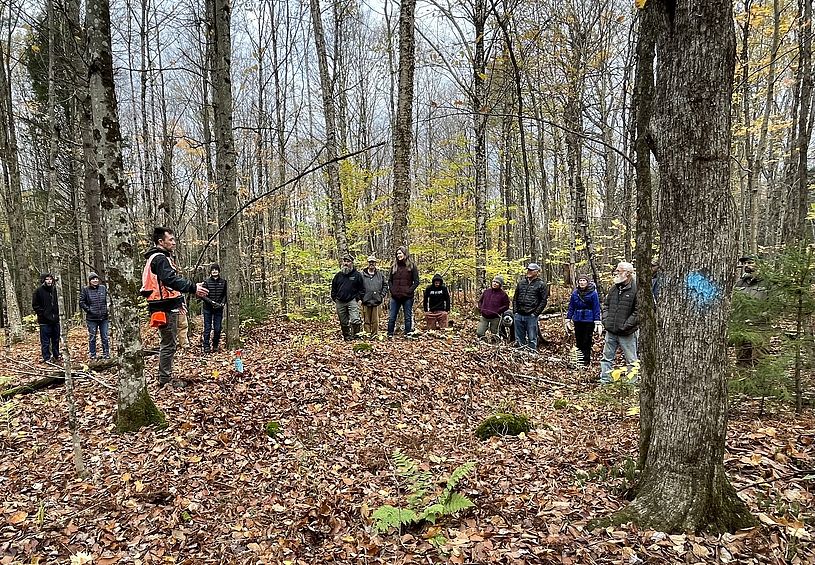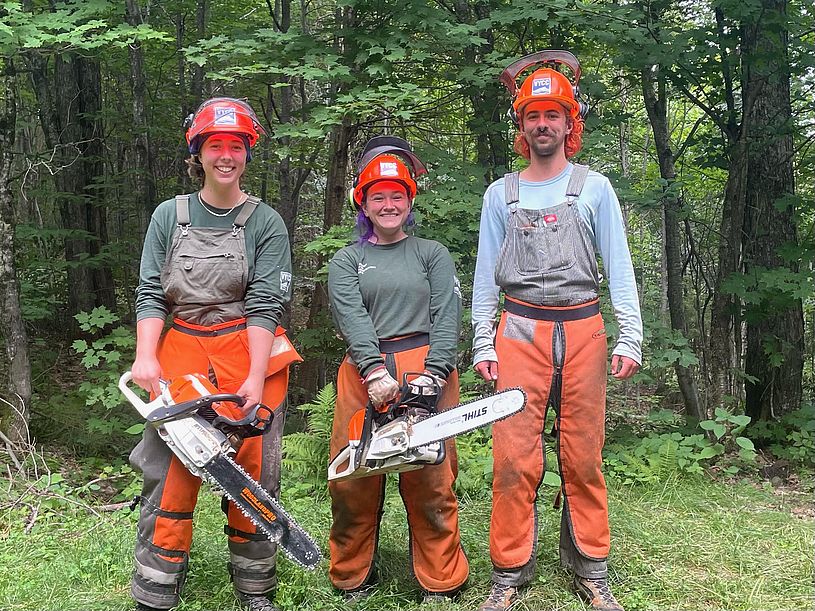Practitioners

Consulting Foresters
For CHC, engagement of consulting foresters is key to success. When stewardship practices are identified and discussed during Woodlots programs, it is ultimately the landowners and their foresters who write them into a management plans and begin implementation.
It’s worth noting that CHC founding board members include both a consulting forester and a county forester. This has admittedly made our work much easier. Through these two, CHC knows the playing field very well, with deeply established relationships within the forest management community.
It is also worth noting that CHC’s requirement that landowners be enrolled in Vermont’s Use Value Appraisal (Current Use) Program ensures that everyone involved in the program has an approved management plan when they enter the program.
However, landowners engaged in the Woodlots Program hire a diversity of consulting foresters, and it is important that we communicate with these professionals about what we are doing and why. We also need to be sure we are not stepping on their toes; the Woodlots Program is intended to complement the work of the consulting forester, not replace it. Since each Woodlots landowner is offered a Forest Songbird Habitat Assessment and a Climate Change Analysis, for example, we want to be sure consulting foresters are prepared to respond to their clients' inquiries to incorporate these into management plans. It is equally important that landowners understand that any engagement of their forester is done independently--and compensated accordingly.

Loggers and Forest Professionals
Through our discussions of forest health and resilience strategies, landowners often identify stewardship practices that they would like to implement. Ultimately, implementation relies on loggers and forest professionals.
Because landowners work with foresters to incorporate practices into management plans, CHC has little direct contact with these professionals; we're a few steps removed. At the same time, we recognize the importance of engaging skilled loggers who do their work with an awareness of forest health and wildlife needs.
It is worth noting that stewarding a forest with wildlife habitat and climate resilience in mind sometimes leads to practices that have no commercial value. A crop tree release or invasive species removal does not allow a landowner to pay the logger with revenue received from the job as a traditional timber harvest would do. This means that the work can be very expensive, and some contractors are not even interested in conducting these jobs, at any price.
When this is the case, CHC can sometimes turn to alternative groups. For example, the Vermont Youth Conservation Corps (VYCC) has a program that trains young adults to do work in the woods while conducting stewardship projects for landowners. When possible, CHC tries to connect landowners with VYCC and other opportunities, creating a winning situation for everyone. You can learn more about a recent CHC partnership with VYCC here.

